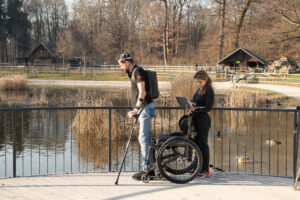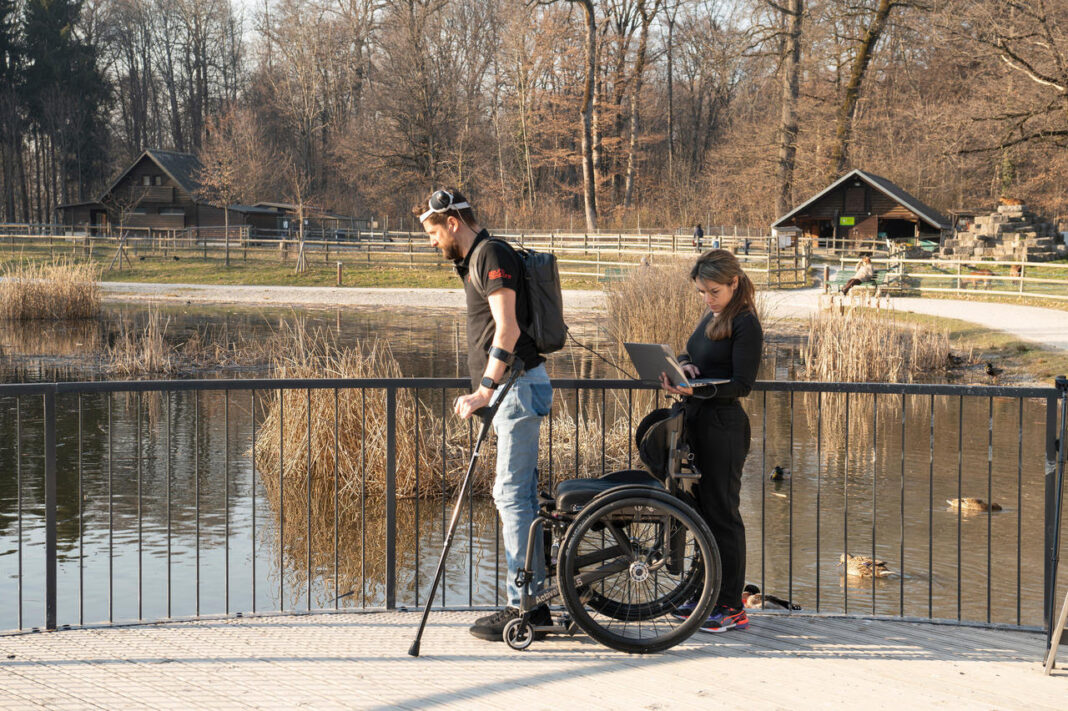
A 40-year-old man whose legs were paralysed in a bike accident 12 years ago is now able to walk because to brain and spinal cord implants.
Gert-Jan Oskam was crippled in his legs and partially paralysed in his arms after his spinal cord was severed in his neck in a bicycle accident in 2011. But, thanks to a gadget that forms a ‘digital bridge’ between his brain and the nerves below his injury1, Oskam is back on his feet and walking.
A 40-year-old paralysed man can now walk again because to new AI implants that connect his brain to his spinal cord.
According to Oskam, the implant that uses artificial intelligence has changed his life.

“Last week, I needed to paint something and no one was available to assist me.” “I took the walker and the paint and did it myself while standing,” he explains.
A 40-year-old paralysed man can now walk again because to new AI implants that connect his brain to his spinal cord.
The brain-spine interface device expands on previous work2 by Grégoire Courtine, a neuroscientist at the Swiss Federal Institute of Technology in Lausanne, and his colleagues. They demonstrated in 2018 that technology that stimulates the lower spine with electrical pulses can enable persons with spinal cord injuries walk again when accompanied with extensive training.
forty years old A paralysed guy is able to walk again because to new AI implants that connect his brain to his spinal cord.
Oskam was one of the trial participants, but his progress stalled after three years. He received a novel device that combines Oskam’s existing spinal implant with two disc-shaped implants put into his skull so that two 64-electrode grids sit on the membrane protecting the brain.
When Oskam considers walking, the skull implants monitor electrical activity in the cortex, the brain’s outer layer. This signal is wirelessly transferred and decoded by a computer that Oskam wears in a backpack, and the information is subsequently transmitted to the spinal pulse generator.
According to Courtine, the earlier device “was more of a pre-programmed stimulation” that generated robotic stepping movements. “Now it’s completely different, because Gert-Jan has complete control over the stimulation parameter, which means he can stop, walk, and climb stairs.”
“Previously, stimulation controlled me, but now I control stimulation through thought,” explains Oskam. “When I decide to take a step, the simulation will begin as soon as I consider it.”
Oskam regained voluntary movement of his legs and feet after around 40 therapy sessions using the brain-spine interface. That type of voluntary movement was not conceivable after spinal stimulation alone, implying that the novel device training sessions stimulated further regeneration of nerve cells that were not totally destroyed following his injury. If Oskam utilises crutches, he can walk short distances without the gadget.
According to Bruce Harland, a neuroscientist at New Zealand’s University of Auckland, “this continued improvement in spinal function is great news for anyone with a spinal-cord injury, because even if it’s a longer-term chronic injury, there’s still a few different ways that healing could happen.”
“It’s certainly a huge jump” towards increased function for those with spinal cord injuries, says neuroscientist Anna Leonard of Australia’s University of Adelaide. She also believes that additional therapies, such as stem cells, have the potential to improve results even more. She adds that, while the brain-spine interface restores walking, it does not address other functions such as bladder and bowel control. “So, there’s certainly still room for other areas of research that could help progress improvements in outcomes for these other sorts of realms,” she says.





